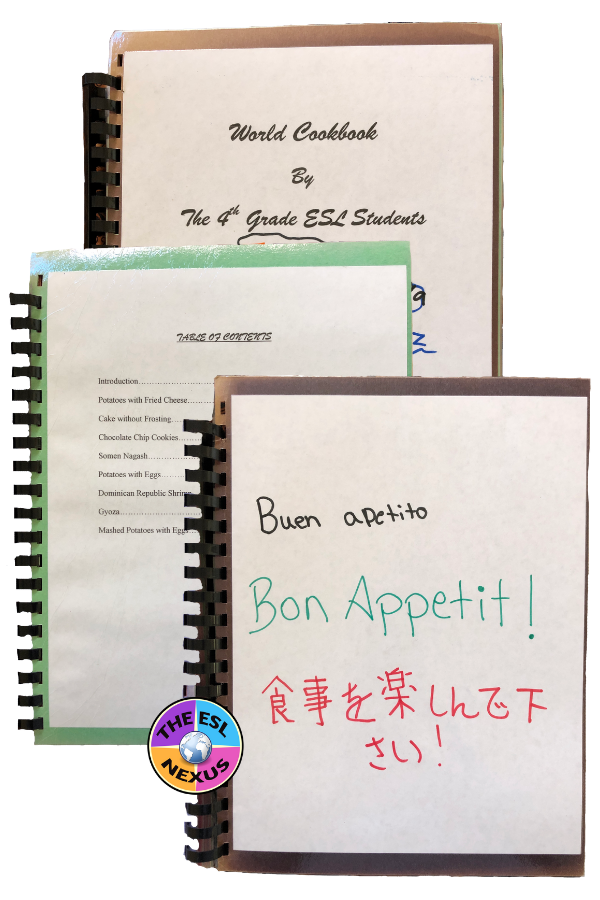Creating a Class Cookbook with Upper Elementary English Learners
When I was teaching English Language Development (ELD) to a group of 4th graders, one year I did a cookbook project with them. We had class twice a week and the project took several weeks to complete. The objectives were to learn about sequencing in stories, practice using sequencing by writing recipes, and practice writing descriptive writing. The final product was a class cookbook of recipes written by the students. We also had a party and invited students’ parents; the foods were cooked at home and the adults brought the dishes in to share with the class.This is a project that you can do in a pull-out ESL class that focuses on ELD or in a world geography class with ELLs and other students. Although it would be wonderful to have a class party with all the foods to share, that may not be possible in many schools. Nevertheless, the learning objectives still make it a worthwhile endeavor.
 |
| Creating a class cookbook teaches many language skills; source: The ESL Nexus |
Steps for Implementing a Class Cookbook Project
* To provide background knowledge and information about sequencing, read 2 stories about cooking. They are “pair-it” books from Steck-Vaughn; the first one listed is fiction and the second is non-fiction
(This post contains affiliate links. That means if you purchase one or both books below, I make a small commission but it's at no additional cost to you. Thank you for your support!)
Nana’s Kitchen, by Darwin Walton, is about a grandmother who cooks a meal for her grandson.
You Can Cook, by Lornette Woo, deals with writing recipes.
* Then, each student picked their favorite food. I told them it should be something special to their culture, not junk food or fast food. They had to write the list of ingredients and how to made the dish. This gave the students practice in writing in sequence.
* Students exchanged their recipes with classmates and peer edited it. They checked for language errors and that the recipes followed the correct format and were clear to understand.
* For more writing practice, the 4th graders then wrote a description of their favorite dish. They explained why they chose that particular dish, described a special time they ate it, and anything else they thought readers should know about it.
* These descriptions were also peer edited. A final copy was then written. Some students also drew pictures to accompany their recipes.
* We had a party during one of our regular class periods. We invited students’ families and several of them came. The food was delicious!
* The culmination of the project was the creation of a class cookbook. I glued all the recipes, descriptions, and illustrations on multi-colored construction paper (the kids chose which colors to use for their work), wrote an introduction and table of contents, and created a title page with every student’s signature on it. Then I laminated and bound everything. The cookbook became part of our class library.
 |
| Pages from my class cookbook; source: The ESL Nexus |
Creating a Class Cookbook with Older English Language Learners
Creating a class cookbook is not a project just for elementary students. I did a very similar project with a group of adults when I was teaching at a language school in New York City.
I didn't use the picture books but it wouldn't hurt to use them even with older learners or to find other books that are more suitable for teens and adults. It is easy to adapt the language objectives to the proficiency level(s) of your students and it’s a wonderful way for you to get to know your students and for them to get to know each other.
Bon appetit!


